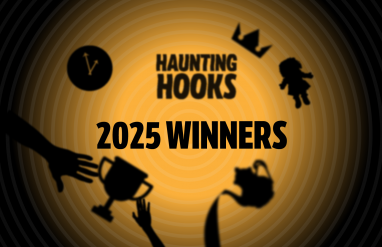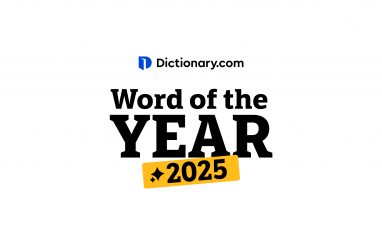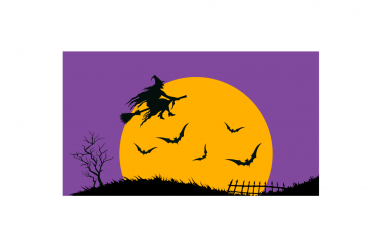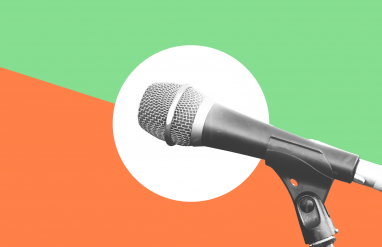by Rory GoryIn a recent study, “Diversity of Youth Sexual Orientation,” The Trevor Project found that one in five LGBTQ youth are using different words to describe their sexual and romantic identities and orientations, including terms like asexual and aromantic. (Read more about this study and those new words here.)
But, there are many persistent and painful myths and misunderstandings surrounding sexual orientation, romantic attraction, and relationship types. Some common misconceptions include that all people desire sex, that sexual and romantic desire are one and the same, and that everyone wants to meet only one person to spend their life with.
Ace Week is a prime time to learn about asexuality and the related topics of romantic orientation and relationship types. It’s also an occasion to discover the emerging language the asexual community has helped create to communicate nuanced identities and diverse desires in more detailed and accurate ways.
What is Ace Week?
Ace Week, also known as Asexual Awareness Week, takes place over the last full week of October each year. This year it falls on October 20–26. The week celebrates the asexual community and its important contributions, including to the conversation around sexuality, romance, and relationships.
Ace Week is also an opportunity to advocate for greater understanding and acceptance of asexual-spectrum identities. The week was founded in 2010 by asexual activist Sara Beth Brooks to help educate members of the LGBTQ community who were unfamiliar with or unaccepting of asexuality as a distinct sexual orientation.
So, what is asexuality?
According to the Asexual Visibility and Education Network (AVEN), “an asexual person is a person who does not experience sexual attraction.” Allosexual, by contrast, is a term used in the asexual community for a person who experiences sexual attraction. (Allo– is a prefix meaning “other.”)Asexual people also call themselves ace, with ace styled after a shortening of asexual. Ace alludes to the ace suit in playing cards, which some asexual people variously use to represent themselves.Asexuality is not the same thing as celibacy, or the decision to abstain from sex. Rather, asexuality is a sexual orientation just like bisexuality or heterosexuality. As with any sexuality, asexuality is neither a choice nor a disorder. And as a sexual orientation, asexuality is a complex intersection of our identities, behaviors, and attractions.
Asexual people experience little to no sexual attraction to anyone—but not necessarily a lack of sexual activity, and certainly not of romantic attraction. Most ace people, however, do not have or desire to have sex. Some asexual people experience sexual drive disconnected from attraction, and others may choose to participate in sexual activity for any number of reasons.
Not every asexual person experiences their sexuality the exact same way. Asexuality, like many sexual orientations, exists on a spectrum.
Asexual people are not by default straight or cisgender. According to the Ace Community Survey, the largest known dataset on the subject of asexuality to date, many aces identify with a non-hetero romantic orientation. Within the 2016 survey, 60.3% of ace respondents considered themselves queer and 14.8% identified as trans, showing a significant overlap with the LGBTQ community.
The diverse experience, and language, of asexuality
While many asexual people do not desire sex, an asexual person’s relationship to sex is theirs to determine, and can range from those who identify as sex-repulsed (strongly averse to sex) to sex-favorable (under certain circumstances sex is enjoyed). Being sex-positive means validating everyone’s personal choice to have or not to have consensual sex.
Some asexual people do experience sexual attraction under certain circumstances, such as demisexuals, who may experience sexual attraction only after making a strong emotional connection with a specific person. (The prefix demi- means “half.”) Demisexuality is an intrinsic sexual orientation on the asexuality spectrum, and should not be confused with behaviors such as choosing to only have sex with people you love or abstaining from sex until marriage.
Grey-a, or grey-asexuality (also spelled gray), refers to sexual identities along a spectrum of asexuality and sexuality. Grey refers to an “in-between” of sexual attraction that is not “black or white.” Someone who is grey-asexual may feel that asexuality describes the majority of their experiences, but under specific circumstances, they may experience sexual attraction, too.
Quoisexual refers to a person who doesn’t relate to or understand experiences or concepts of sexual attraction and orientation. Quoi (French for “what”) is based on the French expression je ne sais quoi, meaning “I don’t know (what).”
The terms asexual umbrella or asexual spectrum encompasses all of the sexual identities related to asexuality, demisexuality, and gray-asexuality.
What does aromantic mean?
People who do not experience romantic attraction are aromantic, or aro for short. Aromantic combines the prefix a-, meaning “not, without,” with romantic. Like asexuality, aromanticism or amoranticity, as they are sometimes called, fall on a spectrum.
Asexual people are not necessarily aromantic, and aromantic people are not necessarily asexual. For example, a person could be aromantic and pansexual, meaning they do not experience romantic attraction and are sexually attracted to all genders (pansexual, with pan- meaning “all”). Conversely, a person could be asexual and panromantic, meaning they do not experience sexual attraction and are romantically attracted to all genders (panromantic).
How is romantic orientation different from sexual orientation?
As a term like panromantic makes clear, the word romantic, “relating to romance,” has become increasingly used as a combining form to indicate a person’s romantic orientation, just as sexual can be combined with other word elements (for example, omnisexual, polysexual.)
Emerging words using romantic give us the language to define romantic attraction with the same specificity that we define sexual attraction. By opening up the dialogue around romantic as well as sexual orientations, the asexual community is creating language that anyone can use to communicate their romantic desires separately from their sexual orientation.
While some asexual people also identify as aromantic, many other asexual people do desire romantic relationships. For asexuals who do not experience sexual attraction, romantic orientations can clarify who they prefer to date or form relationships with.
Just as not all sexual people are straight, not all asexual people identify as heteroromantic, or romantically attracted to a different gender (hetero-, “different”). Asexual people can be homoromantic, attracted to the same gender (homo-, “same.”)
Biromantic and panromantic describe attraction to two or more genders (bi-, “two”) or all genders (pan-, “all”). In the same way that bisexual and pansexual mean different things to different people, so too do the words used to describe romantic attraction to multiple genders.
It’s important to note that sexual orientation is different from romantic orientation. Many assume one’s sexual orientation dictates one’s romantic orientation. For example, people may think that, if you are gay, that means you are both sexually attracted to and romantically attracted to the same gender. However, loving relationships are based on many elements of attraction, not just sexual compatibility, and you don’t need to be sexually attracted to a person to fall in love with them.
There are many types of relationships …
Society often prioritizes romantic relationships over platonic relationships, or close, nonsexual relationships among people. But, there are many other significant relationship types for asexual people, such as platonic partnerships among aromantic people raising children together. Platonic relationships and partnerships are just as important as sexual relationships, and asexual people in relationships deserve to be given the same respect as any other person in a relationship.
The phrase queerplatonic relationship is used to define relationships such as friendships, life-partners, couples, or any form of chosen family that is just as valid and supportive as romantic or sexual partnerships. Called QPRs for short, queerplatonic relationships are available to people regardless of their orientation or gender.
QPRs, like other relationship types, can take many forms, from platonic to romantic and monogamous to polyamorous. Monogamy (mono-, “one”) refers to a relationship where two people are committed to each other. Polyamory (poly-, “many”) is “the practice or condition of being in more than one serious romantic or sexual relationship with the knowledge and consent of all partners involved.”
Culturally, it is often assumed that everyone is searching for a life partner, but there are many people for whom partnership is not desired. Some may be content with friendships and existing familial relationships, and enjoy being single without pursuing a romantic partnership. A person who is non-amorous does not seek any form of committed relationship.
Celebrating Ace Week
Over the last decade, Ace Week has become an international event in October and a vital time to raise awareness and support for the asexual community. Just like other members of sexual and gender minority groups, asexual people also need access to support and information to navigate their sexuality. National LGBTQ organizations like The Trevor Project and GLAAD now provide resources for educating and creating ace-inclusive GSAs (gender and sexuality alliances) and Pride events.
There’s still a long way to go to ensure visibility and acceptance for asexual people, both within the queer community and the general public. No matter how you identify, we can all take part by sharing information, educating, and showing up as an ally for the asexual people in our lives. One of the best ways to do this is by learning the language of romantic and sexual orientations.
Language goes beyond labels of identification. It’s a way for us to understand one another and to create empathy—no matter if you’re asexual or allosexual, aromantic or panromantic, or still exploring the best words to describe yourself.
Rory Gory is the Digital Marketing Manager for The Trevor Project, the leading national organization providing crisis intervention and suicide prevention services to lesbian, gay, bisexual, transgender, queer & questioning (LGBTQ) young people under 25. To respond to the needs of asexual youth, Sara Beth Brooks and David Jay, the founder of AVEN, worked with The Trevor Project in 2012 to create ace-inclusive trainings for volunteers and crisis counselors. Anyone on the asexual spectrum can reach out to The Trevor Project for support, too, at: thetrevorproject.org/help.Read more from Rory Gory on Dictionary.com in their articles: “How Young People Are Redefining Sexuality And Romantic Attraction” | “How The Letter ‘X’ Creates More Gender-Neutral Language” | “Why Is ‘Bisexual’ Such A Charged Word?”








